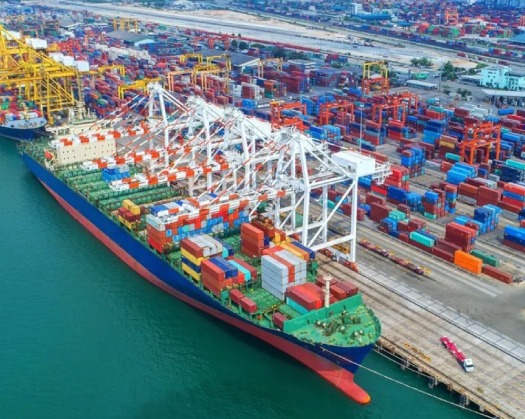Muscat: The escalating adoption of electronic payment alternatives has led to a notable reduction in the utilization of cheques for transactions, as per a recent report.
According to the Financial Stability Report (FSR) 2024, issued by the Central Bank of Oman (CBO), there has been a significant decline in the volume of cheque transactions, transitioning from approximately 4.7 million in 2018 to 3.7 million in 2023.
This decline underscores the ongoing shift from traditional paper-based payment methods to digital alternatives. Furthermore, the report indicates that the volume of cheques returned unpaid has also decreased, dropping from 387,000 in 2022 to 362,000 in 2023. This reduction signifies a 9.8 percent decrease in the proportion of unpaid cheques relative to the total number presented in the system during 2023.
The report further details that the majority of returned cheques were due to financial reasons rather than technical issues. Specifically, 'Insufficient Funds' remains the primary reason for cheque non-payment, accounting for 291,444 cheques, or 80.5 percent of all unpaid cheques. This is followed by 'Account Closed / Frozen / Transferred', with a total of 31,614 cheques (8.73 percent).
It is crucial to highlight that in Oman, a bounced cheque or an unpaid cheque is considered a serious offense, potentially leading to legal repercussions, including fines and imprisonment. In certain jurisdictions, partial fulfillment of cheques has been introduced as an alternative approach. Under this system, if the full amount specified on the cheque is not available in the account of the writer, the bank is obligated to cash a partial amount equivalent to the available funds, unless the account holder rejects this option.
The report notes that the CBO is collaborating with other governmental entities to introduce regulations permitting the partial fulfillment of cheques. This initiative aims to offer greater flexibility to both businesses and individuals in managing their cash flow and account balances. Previously, cheques in Oman were required to be paid in full upon presentation. The introduction of these new rules will enable banks to accept and process cheques even if the account holder does not have sufficient funds to cover the full amount.
In such cases, the bank will debit the available balance from the account, and the recipient of the cheque can decide whether to accept the partial payment or reject the cheque altogether. The CBO's objective is to reduce the incidence of cheque defaults and to establish a more efficient payment system overall.
The Financial Services Regulatory Authority (FSR) has reported that the volume of transactions processed within the Payment and Settlement Systems (PSS) has exhibited a consistent upward trend, with a growth rate of 22.5 percent observed in 2023. Throughout the year, the PSS system facilitated a total of 355.9 million transactions, a notable increase from 275.9 million transactions recorded in the previous year. Concurrently, the aggregate value of transactions conducted through the system witnessed a significant growth of 13.9 percent. By the end of 2023, the total value had escalated to OMR240.1 billion, marking a rise from the previous year's total value of RO 206.6 billion.
In 2023, there was a minor decrease of 6.36 percent observed in the volume of bank transfers processed via the Real-Time Gross Settlement (RTGS) system. However, the value of these transactions demonstrated a notable increase of 14.5 percent compared to the previous year, escalating from OMR179.3 billion to OMR209.9 billion. On an average, the daily value of these transactions amounted to approximately OMR575 million.
Regarding electronic payments, the total volume of retail transactions has seen a significant exponential increase of 22.5 percent compared to the preceding year. In 2023, the number of transactions surpassed 355.2 million, an increase from the previous year's figure of 274.4 million. Concurrently, the value of these transactions rose by 9.70 percent, culminating in a total value of OMR30.2 billion.
The substantial growth in the volume of transactions processed through retail payment systems since 2021 can be attributed to several factors. A primary factor contributing to this growth is the broader adoption of electronic payment methods, coupled with a noticeable shift away from traditional cash usage. The increasing preference for digital transactions, particularly during the pandemic, has led to a surge in the prevalence of electronic payment services.
The advancement in the reach and utilization of these payment systems has been notable. Specifically, the volume and value of transactions conducted through the Automated Clearing House (ACH) have experienced an 18 percent increase.
In a similar vein, the usage of OmanNet, another electronic payment system, has seen a significant increase in both transactions (by nearly 30 percent) and value (by around 10 percent).
Conversely, the utilization of traditional paper-based payment methods, such as cheques, has seen a decline below the five-year average, signaling a shift towards digital alternatives. This decline underscores the ongoing transition from paper-based transactions to more efficient and convenient digital payment solutions.
Furthermore, the usage of mobile payment solutions has seen a substantial surge, with transactions increasing by 726 percent and value increasing by 507 percent in 2023. The convenience and accessibility offered by mobile payment solutions have been instrumental in driving this remarkable growth.
In summary, the proliferation of electronic payment services, the diminishing reliance on cheques, and the notable surge in mobile payment transactions and values have collectively propelled the dramatic increase in transaction volumes processed by retail payment systems over the past three years. In the year 2023, there was a notable escalation of 30.2 percent in the transaction volume of electronic payments, reaching a total of 328.3 million transactions. This surge is predominantly attributed to point-of-sale (POS) transactions, which witnessed a significant rise of 40.5 percent.
Furthermore, transactions conducted via e-commerce platforms exhibited a growth rate of 17.2 percent. Conversely, the volume of transactions at ATMs experienced a slight decline of 2.2 percent.
This shift can be explained by the preference for cashless payment methods, which has led to a reduction in the unnecessary use of cash.








